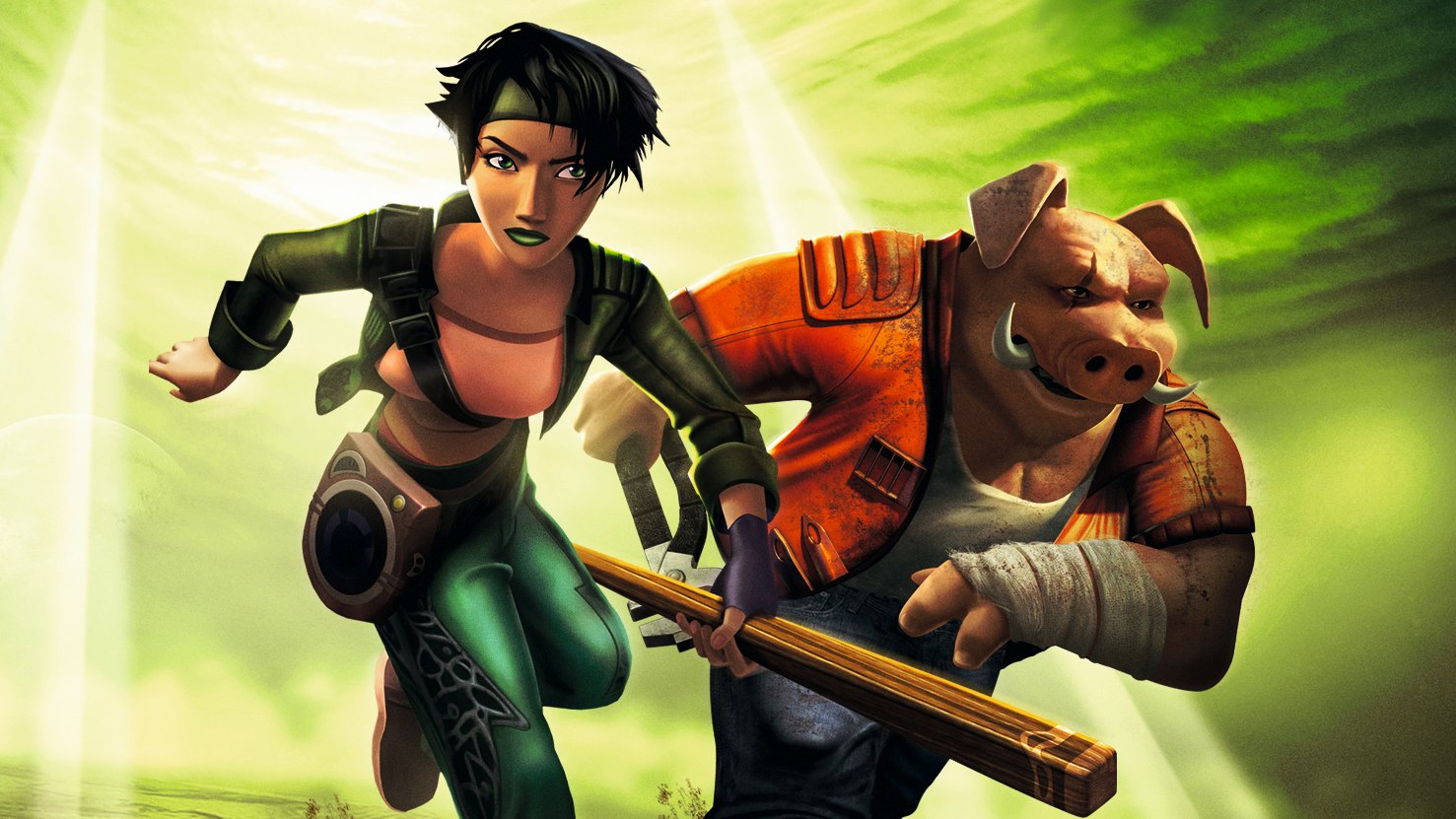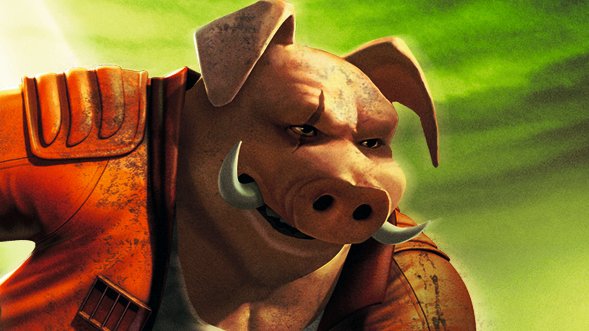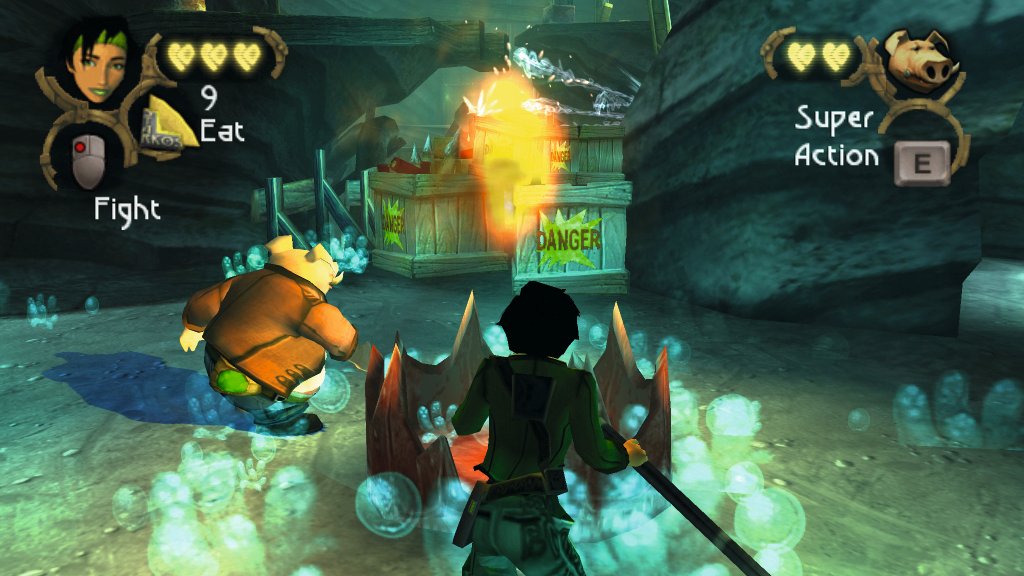Rediscovering the charm and whimsy of Beyond Good and Evil


Reinstall invites you to join us in revisiting PC gaming days gone by. Today, Edwin returns to the excellent Beyond Good and Evil.
Sight is a recurring mechanism in Ubisoft’s open worlds. Assassin’s Creed has its synchronisation towers, from which you gaze out to unlock more of the map. Far Cry has its magic tactical binoculars. And cult favourite Beyond Good & Evil has its reporter’s camera, a chunky old Kodak-style affair.
It may seem a minor part of the whole, compared to hover racing or thwacking aliens with a jo-staff—but it’s both a key plot element and emblematic of how Ubi’s open-world games have gone on to sacrifice sympathy for scope and density.
As philanthropist turned resistance fighter Jade, you use the camera mostly to snap wildlife on behalf of a research institute, earning upgrade items for every roll of film you hand over. It’s another progression mechanism at heart, then, but unlike similar devices it never feels like you’re just siphoning XP from the environment. There’s an element of puzzling to your photojournalism—some beasties must be tempted out, for example by kicking a generator to switch off the lights—and a touch of humour in the silly Latinate classifications for every species you encounter.
Many of the creatures you can photograph are genuinely mesmerising, such as the leviathans who plunge and leap through the seas outside the map’s boundaries. Some subjects react to your scrutiny: point the camera at your porcine comrade Uncle Pey’j and he’ll smile and wave. The difference between all this and what we now expect of Ubisoft’s open-world efforts is immense. In latter-day Assassin’s Creed games, you look at things in order to master and exploit them. In Beyond Good & Evil, you look at things in order to cherish them.

There’s plenty to cherish. Beyond Good & Evil’s war-torn garden planet is a pebble-strewn puddle even by the standards of its era, but everything in it is necessary—and everything feels hand-crafted, from the flying cars that zip past as you steer your squat bumblebee of a hovercraft through the capital, to the drawings on the walls of the orphanage Jade runs when she’s not saving the world. Much as in the Zelda games, nothing has been added for the sake of detail alone—all the pieces hint at a narrative universe larger than the technology and design constraints can supply.
The technology in-game calls to mind the dazzling but reassuringly homely fantasies of Hayao Miyazaki and Studio Ghibli. It mixes the trappings of ‘serious’ sci-fi with archaic touches and a splash of whimsy—there’s a Cortanaesque AI hologram, but he’s a flamboyant Spaniard with a pencil moustache, and the game’s spaceships are bulbous, wheezy fistfuls of jets and fins that might as well run on steam.
Beyond Good & Evil is also one of the few games to nail the fractious concept of ‘singleplayer co-op’, an idea that has given rise to so much agony and hilarity in games like Resident Evil 5. Old Uncle Pey’j (joined later by zealous knucklehead Double H) is a great balance of narrative delivery mechanism and combat prop, a side character who’s independent enough to be feisty company, but not so much that he’ll do your dirty work for you, or get in your way. His jetslam move is crucial to certain puzzles and bossfights—it allows you to set up enemies for Jade’s slow-motion launch attack—but he’s also a mild liability who occasionally needs rescuing from the clutches of some oversized insect. Ubisoft would revisit ‘singleplayer co-op’ at length in 2008’s Prince of Persia, but you can’t beat the charm of this initial stab at the idea.
Keep up to date with the most important stories and the best deals, as picked by the PC Gamer team.

And then there’s the game’s most obvious triumph, Jade herself. She’s notable in part as an early practitioner of Ubisoft’s now-proven 360 degree, context-sensitive combat, switching gracefully between targets to the front and rear. But more than that, she’s a female protagonist whose right to the starring role is never questioned, the odd avuncular remark from Pey’j aside. A leading lady who is simply allowed to get on with things.
It’s another area in which Ubisoft has taken a step back—Assassin’s Creed: Unity might have more believable urban crowds and smarter fights, but its sausagefest of a co-op component wasn’t exactly a love letter to diversity. For this and for the feelings the act of photography kindles, that much-promised, borderline mythical sequel can’t get here soon enough.

